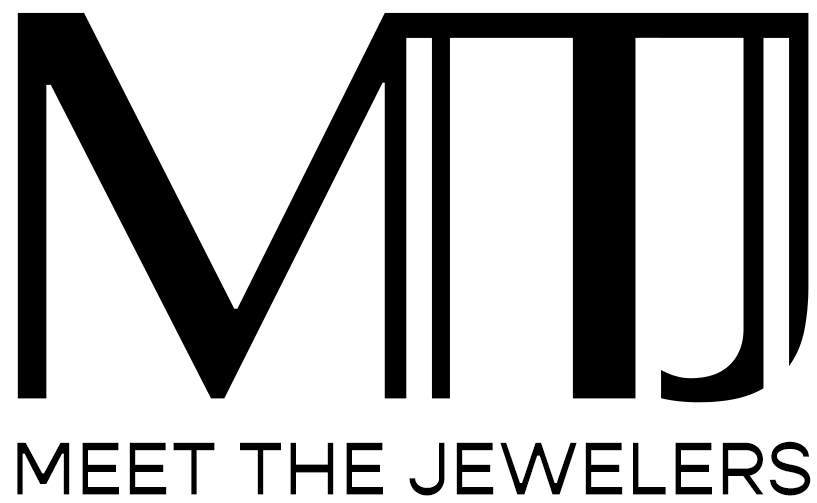Who’s The Rarest Of Them All?
There’s more than meets the eye when it comes to jewelry. Get the big picture with our long-form deep dives into the ever-changing, everlasting jewelry biz.
Photo credit: @jennablakejewelry
Fact: turquoise is primed to eclipse diamonds in value
Our insatiable appetite for superlatives like “the rarest” and “the most valuable” has led the jewelry world to a surprising gemstone: turquoise. It’s easy to fall in love with the blue stone that essentially announces spring’s arrival, but this cool, easy-going gemstone is getting more attention than ever thanks to its increased rarity in the market.
Once found in abundance in mines dotted along the arid Southwest region, American turquoise is now nearly impossible to come by. Many of the most notable mines, like Sleeping Beauty in Arizona, known for graphic lines throughout the stone called the matrix, have completely dried up. For what is left, government permits and strict restrictions have made it nearly impossible for miners to continue their quest to unearth this rare stone.
14k yellow gold and Sleeping Beauty turquoise round stone bangle, $2,250, at RockShop Jewelry
18k yellow gold and Sleeping Beauty turquoise multi-strand necklace, $9,500 at Malouf On The Plaza
Scott Malouf, owner of Malouf on the Plaza, in Santa Fe, New Mexico, said turquoise has tripled in value in the eight years since he opened his store known for carrying authentic Native American jewelry. Unlike diamonds that are graded and certified by an industry standard, turquoise is a stone valued by its origin. “This is an industry that boils down to trust,” Scott told us. “If you know where the stone was mined, and can identify the turquoise as having come from a Bisbee Queen’s Mine or #8 Mine, the piece has an inherent value. People come to us because we have that level of expertise and can speak to the history of the stone itself.”
As contemporary jewelers clamor to find gem-quality turquoise, Native American artists have valued the stone for thousands of years. In their culture, turquoise is synonymous with sacred qualities ranging from prosperity to weather patterns. American turquoise is passed down from generation to generation, and trades among a small group of artists, collectors, and retailers, which Scott considers an “insiders club.”
Jenna Grosfeld, owner of Jenna Blake jewelry, has long admired this mysterious stone. Her latest creation is a necklace with a whopping Sleeping Beauty turquoise as the pièce de résistance. “Turquoise brings a grounded feeling to its surroundings. So much of my work is steeped in history; I love the way turquoise can transport us from modern-day to a place where indigenous people use this gift from nature for medicinal and spiritual purposes. Much like the diamonds and gold that I work with, turquoise transcends trends—it’s ingrained in the DNA of my entire collection,” Jenna explains.
18k yellow gold and large carved Sleeping Beauty turquoise heart pendant necklace, $3,800 at Jenna Blake Jewelry
Sterling silver and Royston turquoise Joseph Lonewolf cuff, $14,995, at Malouf On The Plaza
The turquoise boom in the `70s and `80s inspired fine jewelry houses to incorporate the stone into their high jewelry collections establishing its status as a collectible. Maisons like Cartier, Bulgari, and David Webb mixed turquoise with more traditional gems like diamonds and rubies.
Every jewelry lover remembers Eva Mendez’s iconic look from the 2009 Golden Globes. Her Van Cleef and Arpels turquoise and diamond Panka necklace circa `74 spurred a frenzy of red carpet turquoise looks to follow (Cameron Diaz, Cate Blanchett, the list goes on).
Today, the turquoise market is flooded with highly altered stones, wherein the stone is artificially changed to achieve a deeper color. These stones are oftentimes imported from China where government mining and environmental regulations are more lax than the US. And although China, Iran, and Egypt all produce high-quality raw turquoise, their origins and original conditions are more difficult to discern, illustrating Scott’s point: know the source.
As I head into spring, and feel the urge to wear the bright blue stone, I’m reminded that turquoise is a delicacy to treasure, both rare and valuable.
Assorted American Turquoise Stones By Mine.
Clockwise from top: Baby Blue; Royston; Sleeping Beauty; Morenci; Hachita; Kingman; Red Mountain; Black Web Kingman; Damele. Center stone: #8, at Malouf On The Plaza
Wordsmith: Samantha Durbin Writer: Elissa Velluto
Every item featured is personally selected by our writers and editors (read: we're totally into it). Please know that when you buy through our links, we may earn an affiliate commission (read: we get to keep doing what we love).







